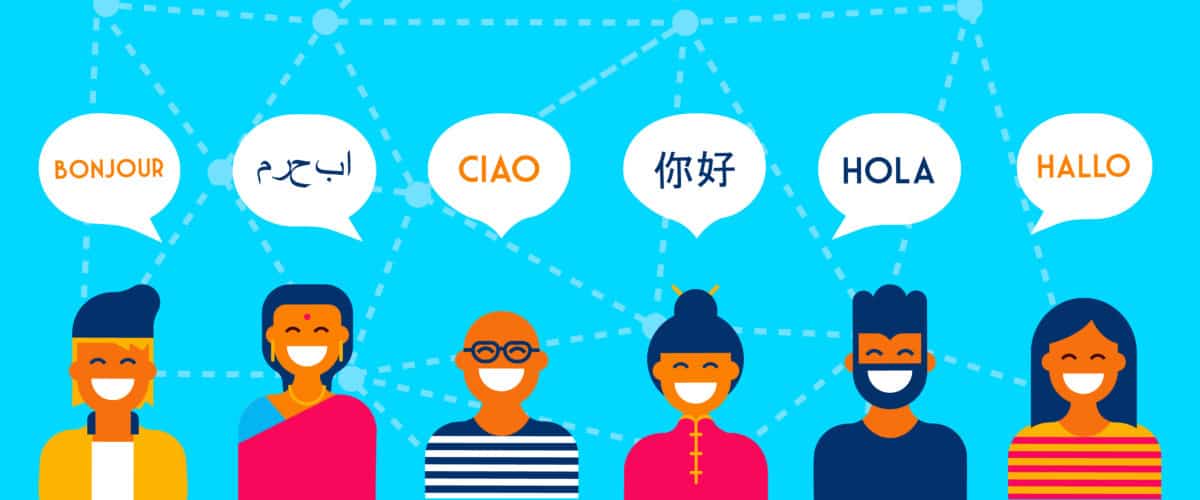When team members from different cultural backgrounds have trouble interacting with one another due to misconceptions or rejection of one another's preferred methods of doing things, interpersonal conflicts can emerge.
Unfortunately, those who are bilingual or multilingual and can bridge cultural gaps in communication are in short supply. When two people from different cultural backgrounds have a conversation, they are said to be communicating “across” or “inter” cultures. Language barriers can arise even among members of the same culture. Tensions increase when people cannot interact with one another. When you include cultural variations, you exponentially increase the number of challenges you’ll face. Realizing that there are problems with communication between cultures is the first step to fixing them.
This article will discuss five difficulties that can arise while attempting cross-cultural communication.
Constraints of Ethnocentrism on Global Communication
The term “ethnocentric” refers to someone who views their culture as superior to others. This group has a hard time relating to people of other cultural backgrounds and often makes assumptions about them. People generally agree that racism and ethnocentrism go hand in hand. Most instances of ethnocentrism are not on purpose; they are the unexpected outcomes of actions or words taken without considering how they might affect individual capacity to comprehend or communicate with others. Preventative measures against ethnocentrism are doomed to fail because the problem is unanticipated. An open perspective can help lessen the prevalence of ethnocentrism secondly educate individuals on the various customs of other cultures.
Negative Stereotypes and Prejudices
Inaccuracies and bigotry about other cultures disrupt dialogue and hurt feelings. If you want to be understood and respected by people of different cultural backgrounds, you’ll need to get past the prejudice that divides them. Prejudice is the unjustified and unfavourable opinion of a person or group. It’s the snap judgment that people make about other people based on superficial characteristics like ethnicity, religion, or language.
Without a doubt, bias becomes an issue when people from different cultural backgrounds come together with people from other cultural backgrounds. In a cross-cultural situation, there is a lack of communication and interaction due to the prevalence of prejudgments.
Communication Disruptions Caused by Language Differences
Two people must first understand each other to start a conversation. This word refers to the ability of people from diverse origins to communicate, learn about, and respect one another’s cultures and values. To eliminate misunderstanding and stress caused by a lack of a common language, all participants in a cross-cultural engagement must be native or near-native speakers of the target language. Because of the language barrier, the discourse is difficult to follow. Multinational corporations have devised solutions to the challenge.

English has emerged as the universal language of business, facilitating effective communication between employees of different nationalities and cultures. For most positions in today’s international organizations, fluency in English is essential because it is rapidly becoming the de facto global business language. Using an interpreter team should assist in eliminating any remaining impediments. Intercultural interaction specialists should be consulted if communication challenges are impeding development. Training can increase the frequency and variety of a person’s native language. Breaking down barriers caused by language and culture is crucial.
Anxiety in Communication Across Cultures
Talking to someone from a different culture or even someone from your own can be awkward at first. Perhaps we are concerned about appearing inept. This may make it difficult for people from different cultural backgrounds to interact with one another, thus missing opportunities to create intercultural ties that may improve our lives. The easiest way to calm your worries is to learn about the cultural norms of the opposite side. Preparation can help you feel less apprehensive and have a more effective conversation.
Concepts of Cultural Difference

One of the biggest hurdles to effective cross-cultural communication is the widespread belief that every culture is equal as seen through its own lens. The principle of cultural relativity states that people and communities should prioritize their cultural norms and values over those of other communities. The concept that any culture is inherently better than any other is fundamentally at odds with the cultural relativist position. Because it encourages people to minimize the significance of the ideas and practices of other groups, cultural relativism is a significant obstacle to intergroup understanding. To try to impose one’s morality on others in that way is immoral.
Communication is the exchange of messages between individuals from various origins and cultures. Communication with people from different cultures is complicated by some issues. In conclusion, these concerns are crucial and must be addressed for successful cross-cultural communication. Therefore, cross-cultural communicators must acquire knowledge of one another’s cultures and ways of thinking. This will make it simpler to overcome the obstacles that arise when people of different cultures interact.
Photo: metamorworks/Shutterstock
You might also like:
Support us!
All your donations will be used to pay the magazine’s journalists and to support the ongoing costs of maintaining the site.
Share this post
Interested in co-operating with us?
We are open to co-operation from writers and businesses alike. You can reach us on our email at [email protected]/[email protected] and we will get back to you as quick as we can.









